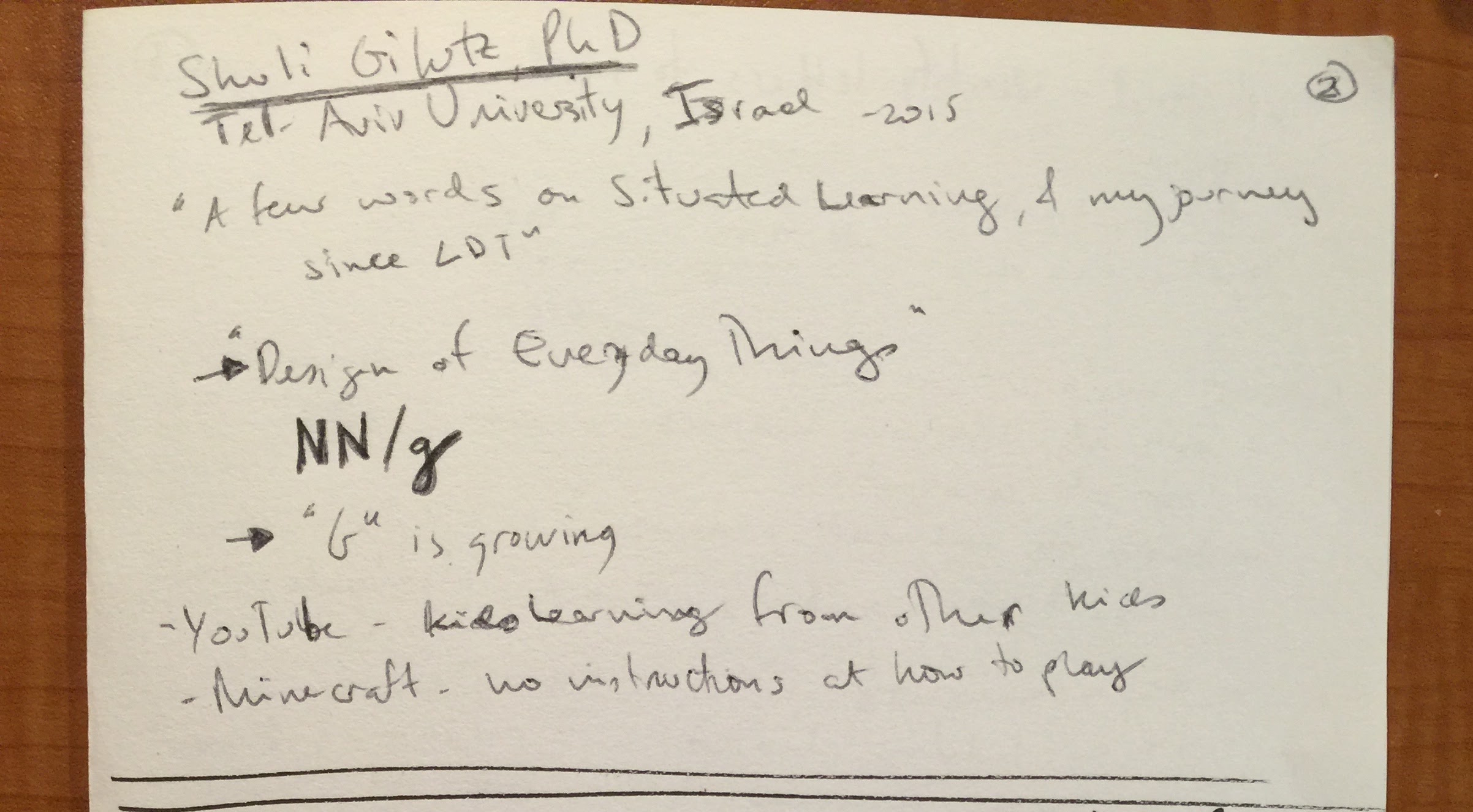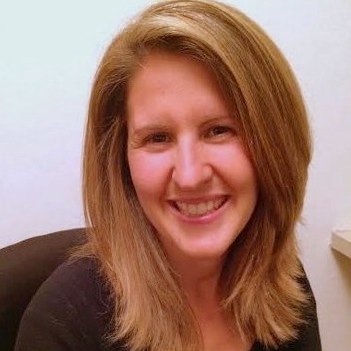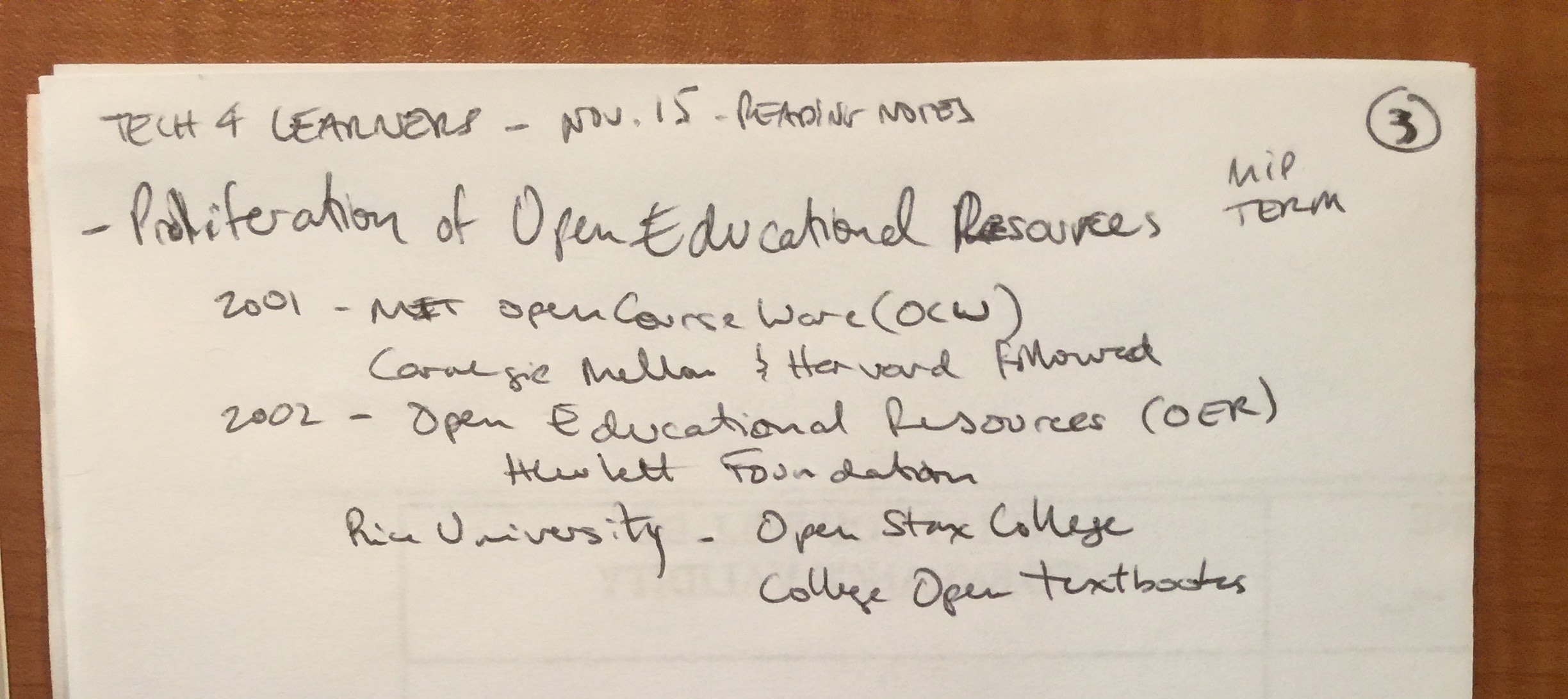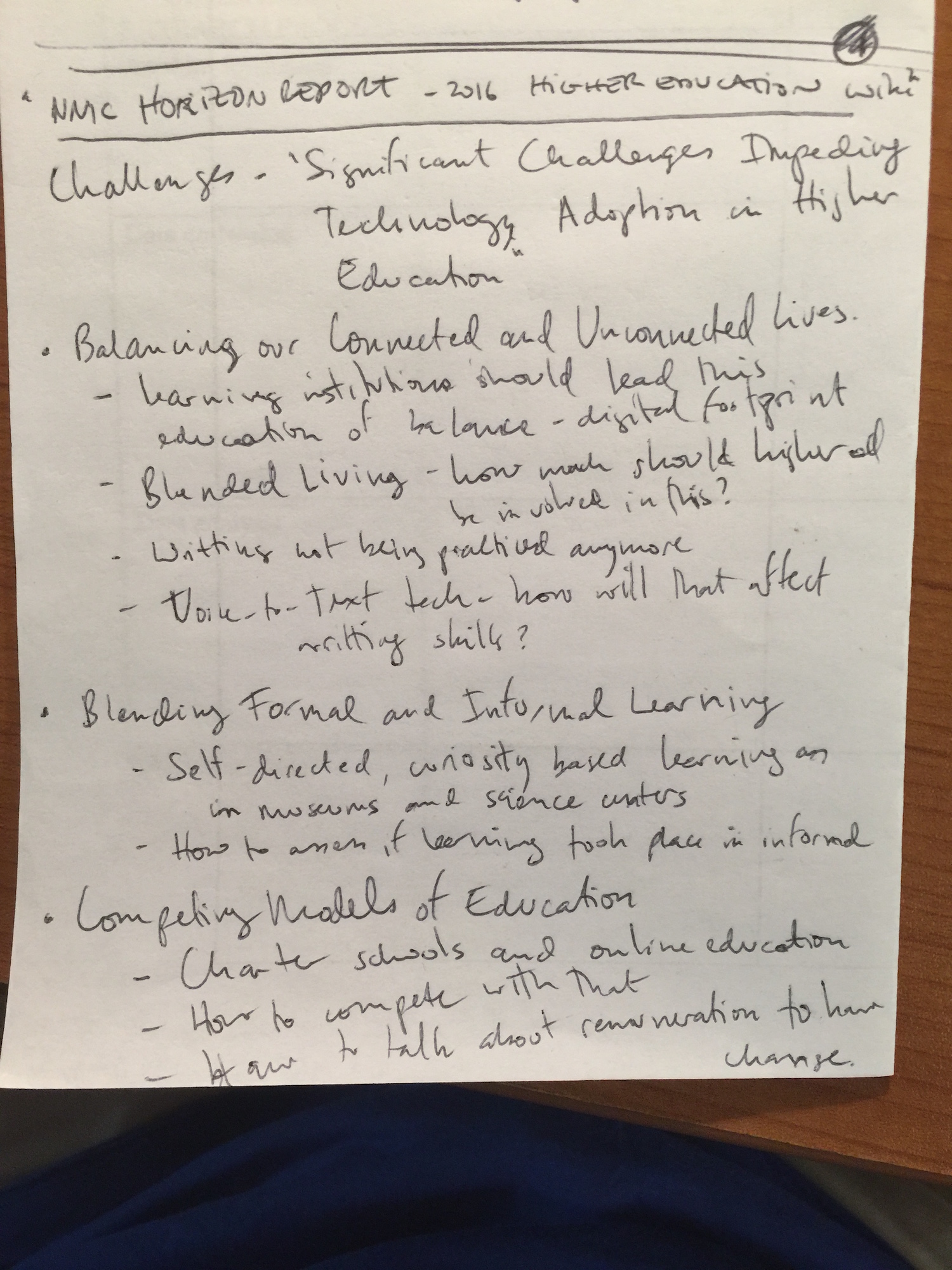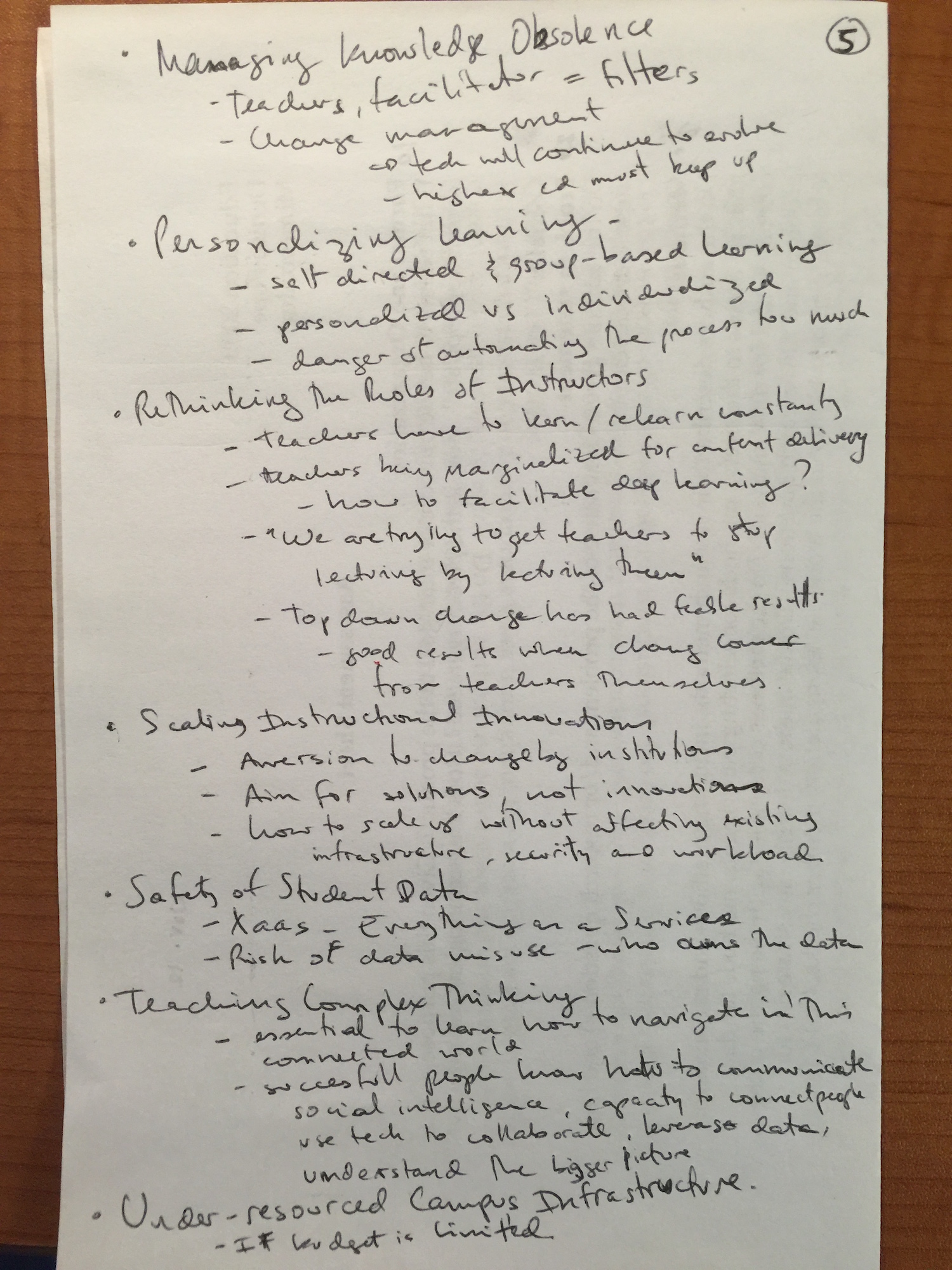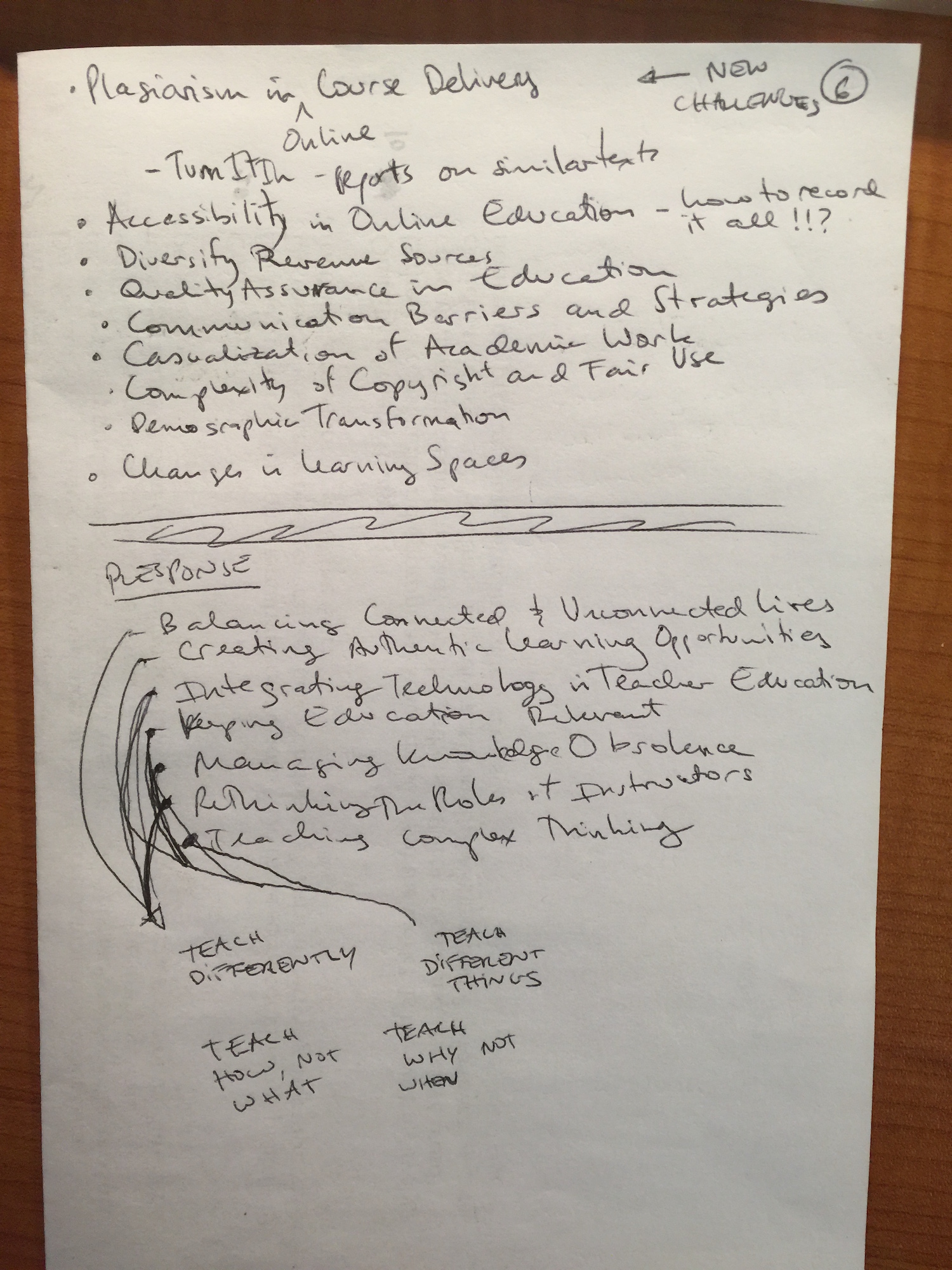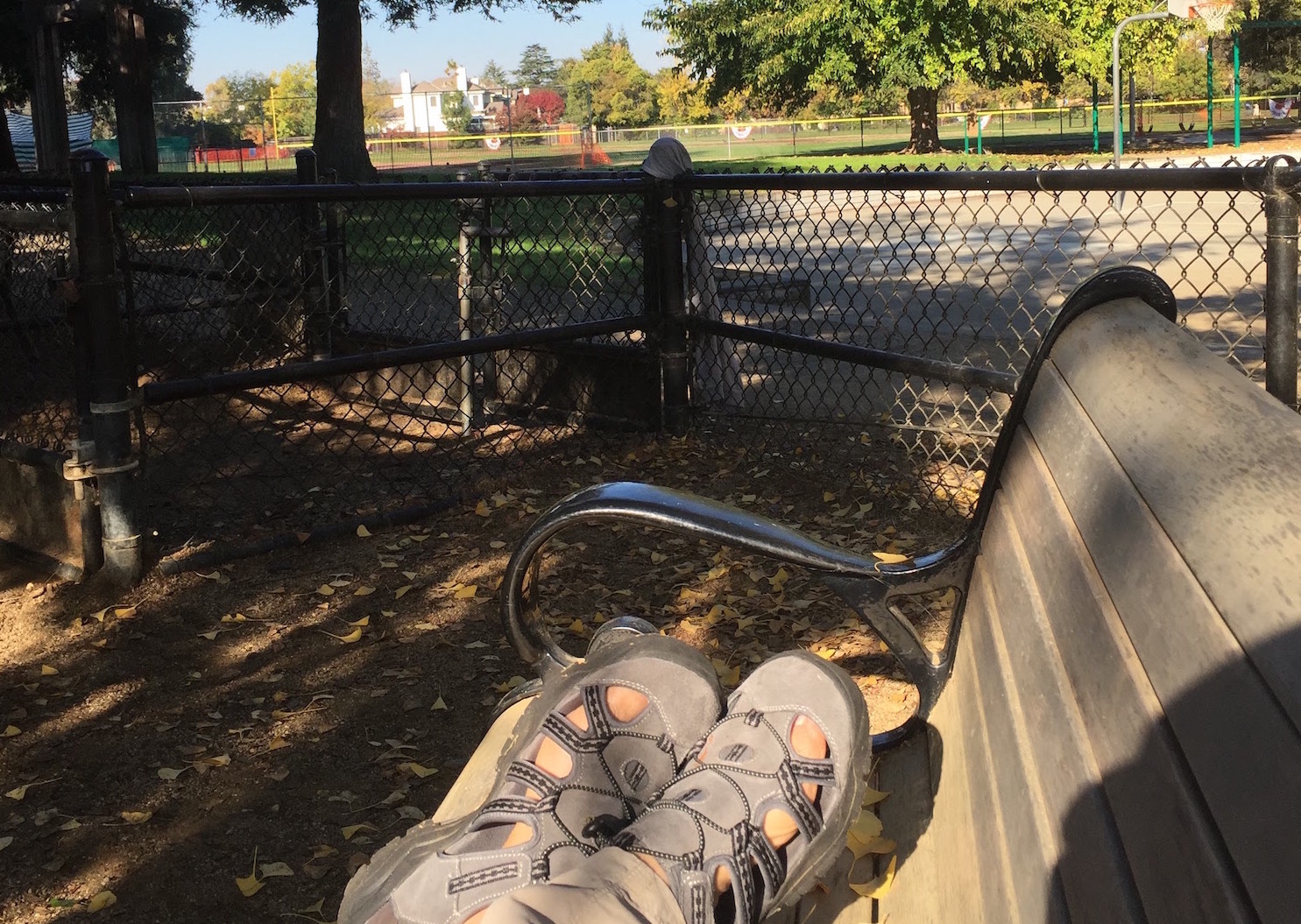Group meeting to talk about propositions for our observations and interviews with Anita from SVEF. It seems like we were not very clear on how high level, theoretical or far fetched could the propositions be.
Anastasia then showed hers and it clicked for me… we have to make claims about the topic at hand that can be supported by direct evidence such as quotes, observations, documentation.
Not to mention the fact that we had not done the actual coding – we had come up with the coding scheme but had not collected the evidence yet.
I went ahead and did it and must say the theory did emerge in situ (insert citation here 🙂 – grounded theory in action.
Here’s the coding, followed by the propositions:
CODING
Research Question
How do third party organizations facilitate productive technology adoption practices between schools and education technology companies?
Alignment amongst stakeholders
- And so those, so when, so depending on the person who’s looking at a product and their position in that whole spectrum – a student, a teacher, a principal even, an instructional coach, or like someone in the district – the way they look at a product is different.
- I think that’s always a tension that happens in education
- And so because for some reason the district didn’t approve this one product she had been using before, and so this year she can’t use it
- my students really want to do it, I really want to do it, why can’t I just do this? But then the district sees it as like, you know, we have a process. This didn’t fit our criteria for some reason or the other. And so therefore, we don’t allow it.
- And so our short list committee consists of venture capitalists, it consists of accelerator partners and then also people from the education community so that typically is maybe a like an Edtech coach of the school or an IT Director at a school. Hum. Potentially some educators as well.
- So we send out to our teachers and they’ve kind of, I would say vaguely, have defined the problem of need, and we’d like to kind of like focus them on the future.
- And I think, what we have heard from teachers and from districts, is that a lot of times for a school for adopt or you know, use a product across their school, its because a group of teachers have started of saying “I’ve been using this product. I really like this product. Hey, like friend over there! Please use this product with me,” and they are like, “Oh! Yeah we like it” and kind of builds momentum that way
Room for improvement
- in an ideal world to be able to give a model to a school district, to any school district and be like if you kind of adopt this to your school…this is a way you could pick technology for your classroom, classrooms, and also give feedback to these developers, and then developers would also have a clear path to entry, which I think is a big issue in the market.
- There might be some observations but I would say these observations are mostly from a project management perspective more than like, an evaluative one. And then they submit feedback. And so we have some templates that we give them that we ask them to submit feedback from.
- we’ve made a lot of those changes based on teacher feedback. Like for example, the reason why teacher teams are at a school site this year instead of from all different schools is partly ‘cause it makes sense, I think, to scale, but also because we that was one of the big pieces of feedback that was given from the beginning.
- I think the research part is really important. So I think school districts can always fund a lot of the research, and I think if we, we now have a process for matching and school support. But, I think the research cycle really brings it all together, so if we are able to create a strong research process then it will be able to, schools will be able to kind of use the research process and say like, “This works, we should use this. This doesn’t work. This is why.” Give them feedback, hopefully they’ll change, the companies will change.
- So we kind of have been thinking about how do we build capacity of teachers to advocate for products they think are working well
- We also have been thinking about how we support districts in understanding ed tech
- And so how do we support districts where maybe they’re not as on top of ed tech, how do we support their administration so that they understand the role of it, understand maybe how select it, and understand how teachers use it so they can provide the support both maybe in resources but also in professional development to their teachers
- Yeah, so we haven’t done this yet exactly, which is why maybe I don’t have a great example, but in the spring, we’re thinking about how do we build capacity of the district.
- We are working with Price Waterhouse Coopers, PWC, with, to implement this work. And so they’re creating a project plan currently. And so then we’ll kind of partner with them to execute on that.
- And we’ve asked for pre and post assessments in the past that our teacher created ahm, but this probably hasn’t been… we have not been doing that. I think we need to find a better way to incorporate, so…
- Additionally for this round something we’d like to do is maybe then from our 6 companies that we work with, work with a few of them and help them… help support implementation in the school versus just a couple classrooms that a school.
- We also work with different partners, so we’re kind of thinking about, uh, I know another group is doing design-based implementation research, so DBIR research
Metrics for success of SVEF
- For us its capacity of teachers [capacity of teachers] so we support, in our last round we supported 25 teachers. And this round we have ‘bout 13 teams of teachers.
- Also we use a platform called Learn Trials which kind of gets qualitative feedback generally from these teachers about the product and includes comments but also has a rubric that they kind of use.
- Learn Trials – and so they have a rubric that assesses an ed tech company across different strands whether that’s usage, whether that’s how easy was it for it to set up.
- Where you’re able to kind of see how the product performs over time.
- It could be classroom efficiency. It could also be like differentiating or like being able to adapt to each person where they’re at in the classroom. Um, but I think there has to be some sort of benefit to it.
- But I imagine that if a product is doing well, then it also provides, like over time, it’ll provide feedback, and that product will continue to get better, and it will continue also to grow in usage around the area.
- You would find out over long term if it works versus something that’s more like yes that works or no that doesn’t work right away.
Dealing with Startups
- And so we kind of didn’t wanna companies to support more than 2 or 3 although I think… we… we… we didn’t wanna it to be super challenging for companies to support and also since they are early stage products, we found that some companies as they’re taking off, like, they get really busy and they’re like, completely immersive so… I think it’s to balance both the support aspect but as well is kind of the teachers that we can support also.
- That just happened this spring and I don’t think it has been yet. Hum… they’re still also like an early, you know like an early stage company so they’re, I think they’re still growing and figuring out exactly what it looks like. But I think that we are trying to support companies in that way. And we’re still figuring that out
- And so they became pretty unresponsive with our teachers. The teachers like, emailing me, and I’m like trying to get in contact with it, and so typically when there’s not communication between these parties, it would… the pilot would not be as successful as it could because they weren’t communicating
- I think one of the big challenges is, in edtech, it’s like there’s so many edtech companies so it’s how do you kind of bring to the surface the ones that are promising? So, I think our goal in vetting the companies is to bring to the surface some of the more promising early, like, edtech companies and kind of help them go from early to mid. I think there’s a big jump from those two and some people don’t (laughs) don’t make it
- So I think that that’s why we’re working with early stage companies because I think it’s, it’s possible to find one now that meets the needs of many teachers and kind of help it kind of just move along.
- I think for us the goal is that, you know, we kind of help with this, this market where it’s a little, it’s not very defined…no one is really guiding these people. So they just come up with an idea, and they just kind of throw it out. And if it works, that’s great, and if it doesn’t, then not. But I think we’re kind of hoping to pull out some of those that work. But I think ours, the goal would be like it’s a longer term
Focus on early-stage companies
- i think the goal is to find…find innovative things that are happening in education and help support their growth.
- So we’re recruiting startups that are early stage so, what I would say we define that between Seed and Series A
- And so we kind of didn’t wanna companies to support more than 2 or 3 although I think… we… we… we didn’t wanna it to be super challenging for companies to support and also since they are early stage products, we found that some companies as they’re taking off, like, they get really busy and they’re like, completely immersive so… I think it’s to balance both the support aspect but as well is kind of the teachers that we can support also.
- That just happened this spring and I don’t think it has been yet. Hum… they’re still also like an early, you know like an early stage company so they’re, I think they’re still growing and figuring out exactly what it looks like. But I think that we are trying to support companies in that way. And we’re still figuring that out
- And so they became pretty unresponsive with our teachers. The teachers like, emailing me, and I’m like trying to get in contact with it, and so typically when there’s not communication between these parties, it would… the pilot would not be as successful as it could because they weren’t communicating
Ethics of testing early-stage products on real learners
- And so because for some reason the district didn’t approve this one product she had been using before, and so this year she can’t use it
- Um, but I do think as time goes on, something that needs to kind of change in the work is that we have to support both early stage companies but also like mid, like later stage companies, so that you know, teachers change their practice or you know, like, it, is it really affecting students if it’s in ten classrooms, right? Not really.
- I think teachers who we pick, we try to pick ones who are very…very experienced with using tech in the classroom and so I think that you, you find that teachers who use tech in the classroom, you…it’s like their instruction is different
Tension between Decision Makers
- And so because for some reason the district didn’t approve this one product she had been using before, and so this year she can’t use it. And so, right, to her, she, the way this teacher sees it is like, well, like my students really want to do it, I really want to do it, why can’t I just do this? But then the district sees it as like, you know, we have a process. This didn’t fit our criteria for some reason or the other. And so therefore, we don’t allow it. Right? And so then there’s that tension, and I think we’re still figuring out how you solve that.
- my students really want to do it, I really want to do it, why can’t I just do this? But then the district sees it as like, you know, we have a process. This didn’t fit our criteria for some reason or the other. And so therefore, we don’t allow it.
- “This works, we should use this. This doesn’t work. This is why.” Give them feedback, hopefully they’ll change, the companies will change.
- And I think, what we have heard from teachers and from districts, is that a lot of times for a school for adopt or you know, use a product across their school, its because a group of teachers have started of saying “I’ve been using this product. I really like this product. Hey, like friend over there! Please use this product with me,” and they are like, “Oh! Yeah we like it” and kind of builds momentum that way
Framework Creation
- so I think we’ll kind of get an aggregate report from that data and then run some sort of roundtable with these directors.
- We’re trying to create like a systematic way to like do that, I guess, is assess kind of the edtech side infrastructure but also create a model so piloting of edtech, especially new edtech, is easier, and then there’s a route that’s more clear to the question for what works and what doesn’t.
- That’s the goal. I think is to some sort of model that you can follow, like implement, like a flowchart almost.
- Uh I think in like ten years, ideally, we wouldn’t have to do that because schools and districts would be doing that internally, right.
Levels of Engagement
- Wish to engage
- We also have been thinking about how we support districts in understanding ed tech
- And so how do we support districts where maybe they’re not as on top of ed tech, how do we support their administration so that they understand the role of it, understand maybe how select it, and understand how teachers use it so they can provide the support both maybe in resources but also in professional development to their teachers
- help support implementation in the school versus just a couple classrooms that a school
- I would say I don’t know enough about school districts and about school…counties, offices, to be able to know whether or not they’re functional. There’s a lot of bureaucracy, I think, that comes up when you work with the county and work with…there’s so many different needs and so many different people kind of working on it that sometimes…they can’t, they’re unable to kind of do certain actions because of different reasons, whatever they are. So I don’t know.
- Already engage with
- we do these ed tech assessments where we go to different school districts and…walk them through an ed tech assessment from hardware all the way to software.
- And so our short list committee consists of venture capitalists, it consists of accelerator partners and then also people from the education community so that typically is maybe a like an Edtech coach of the school or an IT Director at a school. Hum. Potentially some educators as well.
- For us its capacity of teachers [capacity of teachers] so we support, in our last round we supported 25 teachers. And this round we have ‘bout 13 teams of teachers.
- So we send out to our teachers and they’ve kind of, I would say vaguely, have defined the problem of need, and we’d like to kind of like focus them on the future.
- we give a lot of teacher professional development during that time
- And so I think our program is also to help teachers who are early adopters of technology, help them kind of meet other teachers at different school for early adopters, and build a cohort that understands that and kind of can refer to each other.
- So in the past when we’ve done it, when I run it, it was just I would recruit individual teachers from schools and so then I would form them onto a team so maybe a school, a teacher from school A, a teacher from school B, and a teacher from school C. And in this round I re…, we did recruitment where I recruited teacher teams. So now it’s like 3 teachers from school A, 3 teachers from school B, and then they are all using the same product at their school site so I think that helps with the piece of collaboration that was harder to come by earlier.
- So after the orientation we kind of let them go and set up their products for about a week or two
- There might be some observations but I would say these observations are mostly from a project management perspective more than like, an evaluative one.
- And then at the end of this orientation we SVF maybe with the help of some of our partners like LearnTrials will aggregate some of this data and will share that out with the community.
- Uh I think in like ten years, ideally, we wouldn’t have to do that because schools and districts would be doing that internally, right.
- I mean in my head an edtech vendor is a provider, right? So they should be providing some service that fits a need that a school has or a teacher has or a student has in some way
- Districts
- Corporate market
- Teachers
- Pilot Program
- Schools
- Startups
Neutrality of SVEF
- I also think that since we’re neutral, we’re not a school, we’re not an edtech company. I think that that puts us in a position to facilitate those relationships well.
- we’re not really affiliated with edtech venture funds, or like incubators, right. We have partnerships with them, but we’re not like soliciting. Or we’re not trying to make a sale, so school districts are more willing to work with us because we’re not like, “You have to use this product because we’re going to like make money from the fact that you use this product.”
PROPOSITIONS
Conflict of interests amongst stakeholders challenges the implementation of ed tech.
- Conflict of interests
- depending on the person who’s looking at a product and their position in that whole spectrum – a student, a teacher, a principal even, an instructional coach, or like someone in the district – the way they look at a product is different. (AC, Interview)
- I think that’s always a tension that happens in education (AC, Interview)
- we found that some companies as they’re taking off, like, they get really busy and they’re like, completely immersive so… I think it’s to balance both the support aspect but as well is kind of the teachers that we can support also. (LL, Interview)
- And so because for some reason the district didn’t approve this one product she had been using before, and so this year she can’t use it. (AC, Interview)
- And so our short list committee consists of venture capitalists, it consists of accelerator partners and then also people from the education community so that typically is maybe a like an EdTech coach of the school or an IT Director at a school. Hum. Potentially some educators as well. (LL, Interview)
- Challenges to implementation
- And so because for some reason the district didn’t approve this one product she had been using before, and so this year she can’t use it (AC, Interview)
- my students really want to do it, I really want to do it, why can’t I just do this? But then the district sees it as like, you know, we have a process. This didn’t fit our criteria for some reason or the other. And so therefore, we don’t allow it. (AC, Interview)
- And so they became pretty unresponsive with our teachers. The teachers like, emailing me, and I’m like trying to get in contact with it, and so typically when there’s not communication between these parties, it would… the pilot would not be as successful as it could because they weren’t communicating (LL, Interview)
- my students really want to do it, I really want to do it, why can’t I just do this? But then the district sees it as like, you know, we have a process. This didn’t fit our criteria for some reason or the other. And so therefore, we don’t allow it. Right? And so then there’s that tension, and I think we’re still figuring out how you solve that.” (AC, Interview)
- we’re thinking about how do we build capacity of the district. And so we are thinking about convening some…instructional tech directors in a meeting and having them kind of talk about challenges they faced or things they’ve done really well in implementing education technology in the classroom.” (AC, Interview)
- what we have heard from teachers and from districts, is that a lot of times for a school for adopt or you know, use a product across their school, its because a group of teachers have started of saying “I’ve been using this product. I really like this product. Hey, like friend over there! Please use this product with me,” and they are like, “Oh! Yeah we like it” and kind of builds momentum that way (LL, Interview)
SVEF has stronger relationships with teachers than with decision makers.
- Relationships with teachers
- my students really want to do it, I really want to do it, why can’t I just do this? But then the district sees it as like, you know, we have a process. This didn’t fit our criteria for some reason or the other. And so therefore, we don’t allow it. (AC, Interview)
- So we send out to our teachers and they’ve kind of, I would say vaguely, have defined the problem of need, and we’d like to kind of like focus them on the future. (LL, Interview)
- we’ve made a lot of those changes based on teacher feedback. Like for example, the reason why teacher teams are at a school site this year instead of from all different schools is partly ‘cause it makes sense, I think, to scale, but also because we that was one of the big pieces of feedback that was given from the beginning. (JL, Interview)
- So we kind of have been thinking about how do we build capacity of teachers to advocate for products they think are working well (AC, Interview)
- For us its capacity of teachers [capacity of teachers] so we support, in our last round we supported 25 teachers. And this round we have ‘bout 13 teams of teachers. (LL, Interview)
- Also we use a platform called Learn Trials which kind of gets qualitative feedback generally from these teachers about the product and includes comments but also has a rubric that they kind of use. (LL, Interview)
- Relationships with decision makers
- I think it’s hard to say because I would say I don’t know enough about school districts and about school…counties, offices, to be able to know whether or not they’re functional. (JL, Interview)
- Yeah, so we haven’t done this yet exactly, which is why maybe I don’t have a great example, but in the spring, we’re thinking about how do we build capacity of the district. (JL, Interview)
- in an ideal world to be able to give a model to a school district, to any school district and be like if you kind of adopt this to your school…this is a way you could pick technology for your classroom, classrooms, and also give feedback to these developers, and then developers would also have a clear path to entry, which I think is a big issue in the market. (JL, Interview)
- We also have been thinking about how we support districts in understanding ed tech (AC, Interview)
- Additionally for this round something we’d like to do is maybe then from our 6 companies that we work with, work with a few of them and help them… help support implementation in the school versus just a couple classrooms that a school. (LL, Interview)


